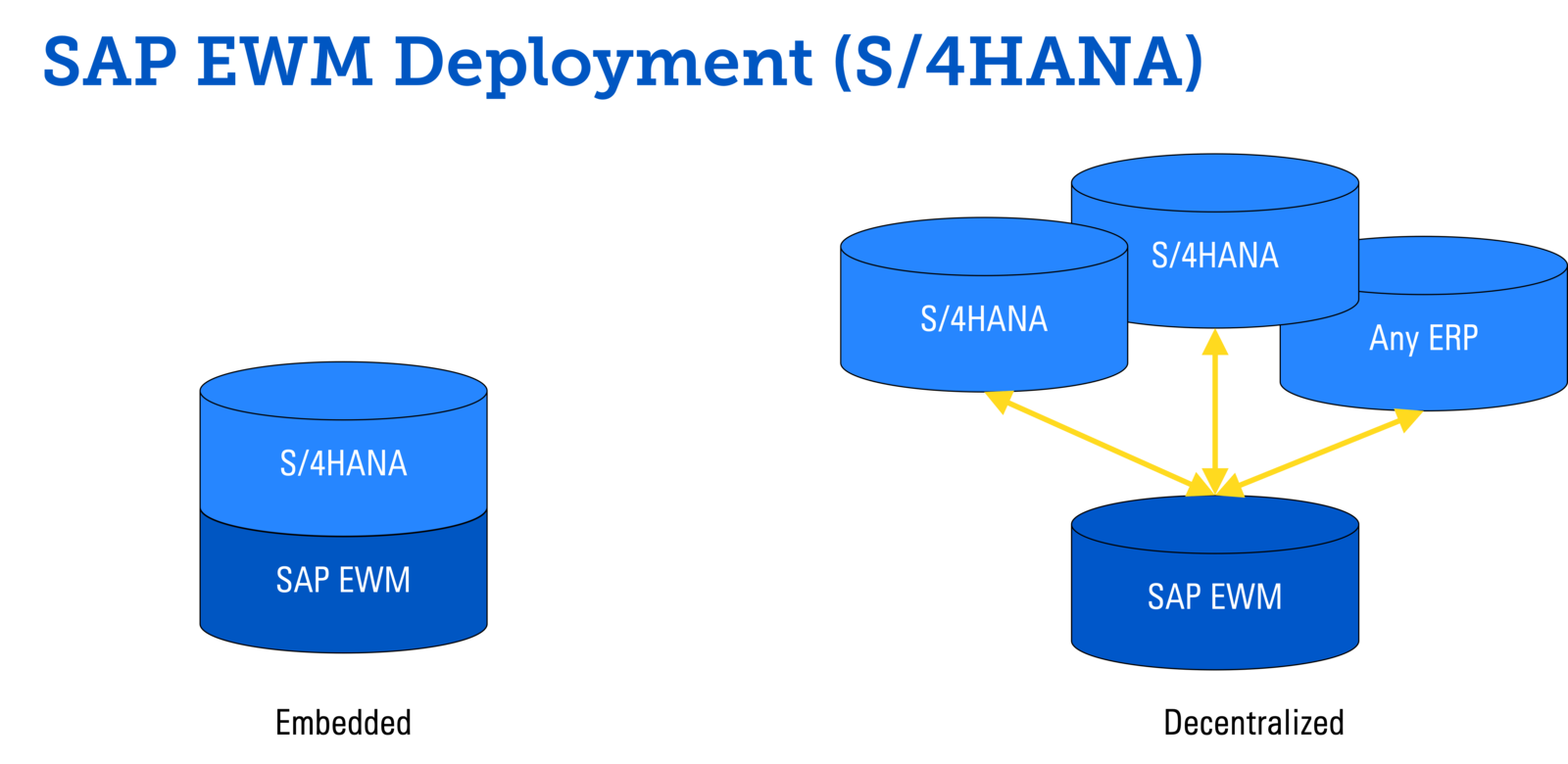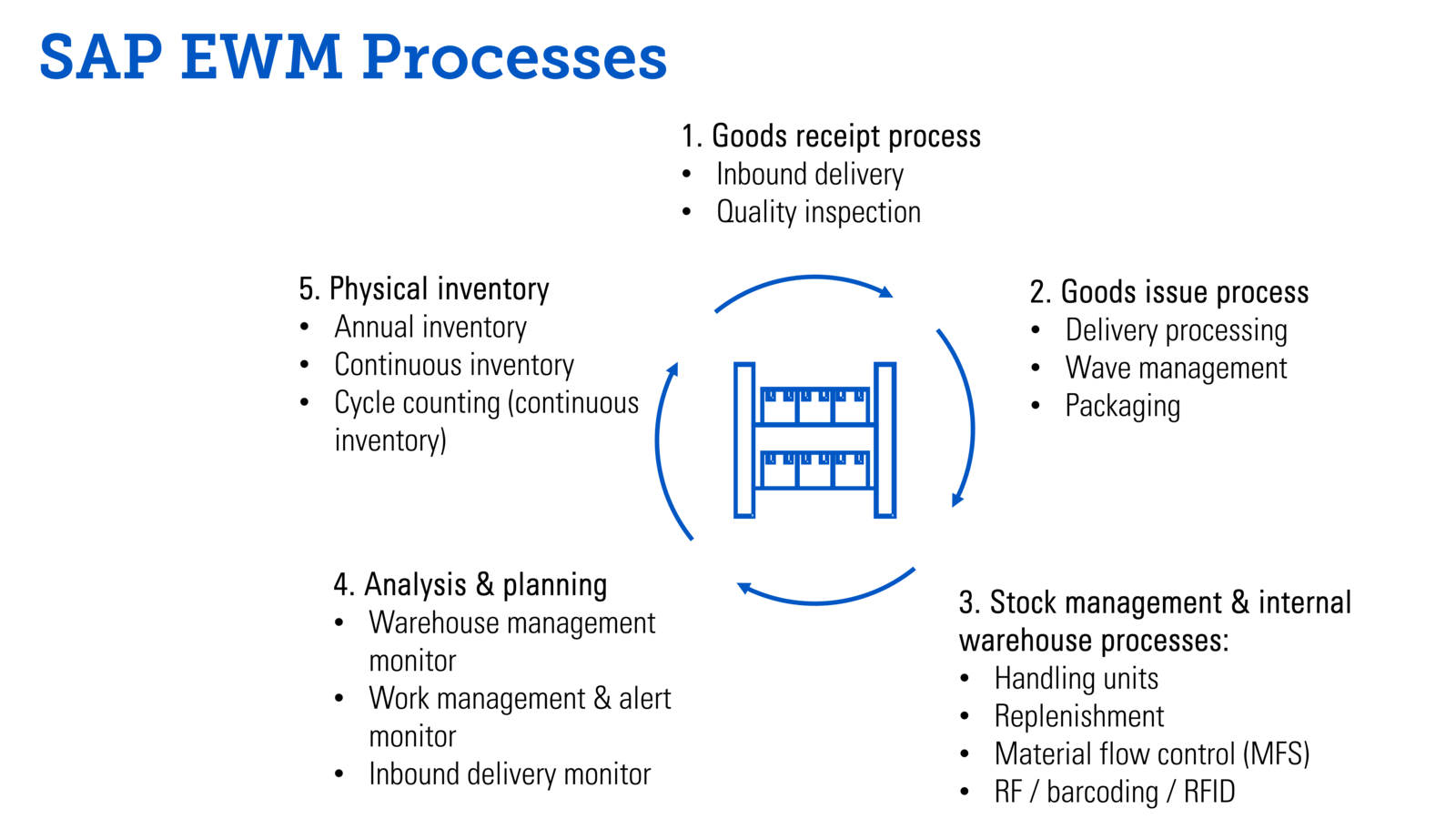The New Software Solution for a Powerful Warehouse Management System
SAP Extended Warehouse Management (SAP EWM) is the way to a future-proof, structured warehouse. It aims to facilitate better integration with other business processes as well as clean management and monitoring of warehouse processes.
The challenges facing the market at present are also affecting supply chains. Managing warehouse stock is becoming increasingly complex, especially when it comes to effectively handling materials with different properties, storage locations or expiration dates. To adequately and proactively address internal and external factors, it is necessary to define warehouse strategies that increase flexibility and transparency in stock and processes.
Previously, customers could use the Warehouse Management (WM) system in ERP ECC. However, it is envisaged that SAP will cease support for this system in 2027. In order to ensure that those customers currently using the SAP WM system can continue to enjoy the benefits of a warehouse management system, SAP is providing new functions as part of the migration to the Extended Warehouse Management (EWM) component. SAP's solution covers a wide range of logistics processes, allowing companies with complex warehouse systems as well as companies that have not previously used a WM system to migrate to EWM.
EWM is an integrated solution developed by SAP to support companies with complex logistics processes in achieving efficient warehouse management. Extensive warehouse processes can be implemented in SAP EWM on a customer-specific and flexible basis. Rapid integration with the customer system is also guaranteed. EWM seamlessly integrates with other systems such as ERP systems, Materials Management systems, and Sales & Distribution systems.
A number of additional functions can be integrated into the standard processes. These contribute significantly towards optimizing warehouse processes and increasing work productivity. Linking EWM with applications such as Yard Management, Advanced Returns Management, Cross-Docking or SAP Transportation Management ensures greater transparency and simplified logistics processes. Mobile devices such as handhelds or scanners can be connected via the radio frequency functions.
How Does SAP EWM Differ from SAP WM?
The main difference between SAP EWM and SAP WM is their different system architectures.
SAP WM is an integral part of SAP ERP ECC.
SAP EWM is a standalone system that can either be operated as an embedded (eEWM) system within SAP S/4HANA or is available as a separate (decentralized) system. SAP EWM is deeply integrated with SAP ERP and facilitates seamless integration with other SAP modules such as Materials Management, Sales and Distribution, and Production, thereby allowing companies to integrate and automate their entire Supply Chain Management systems.
SAP EWM can also continue to operate as a decentralized, external system in order to connect several ERP systems to a central warehouse system.


